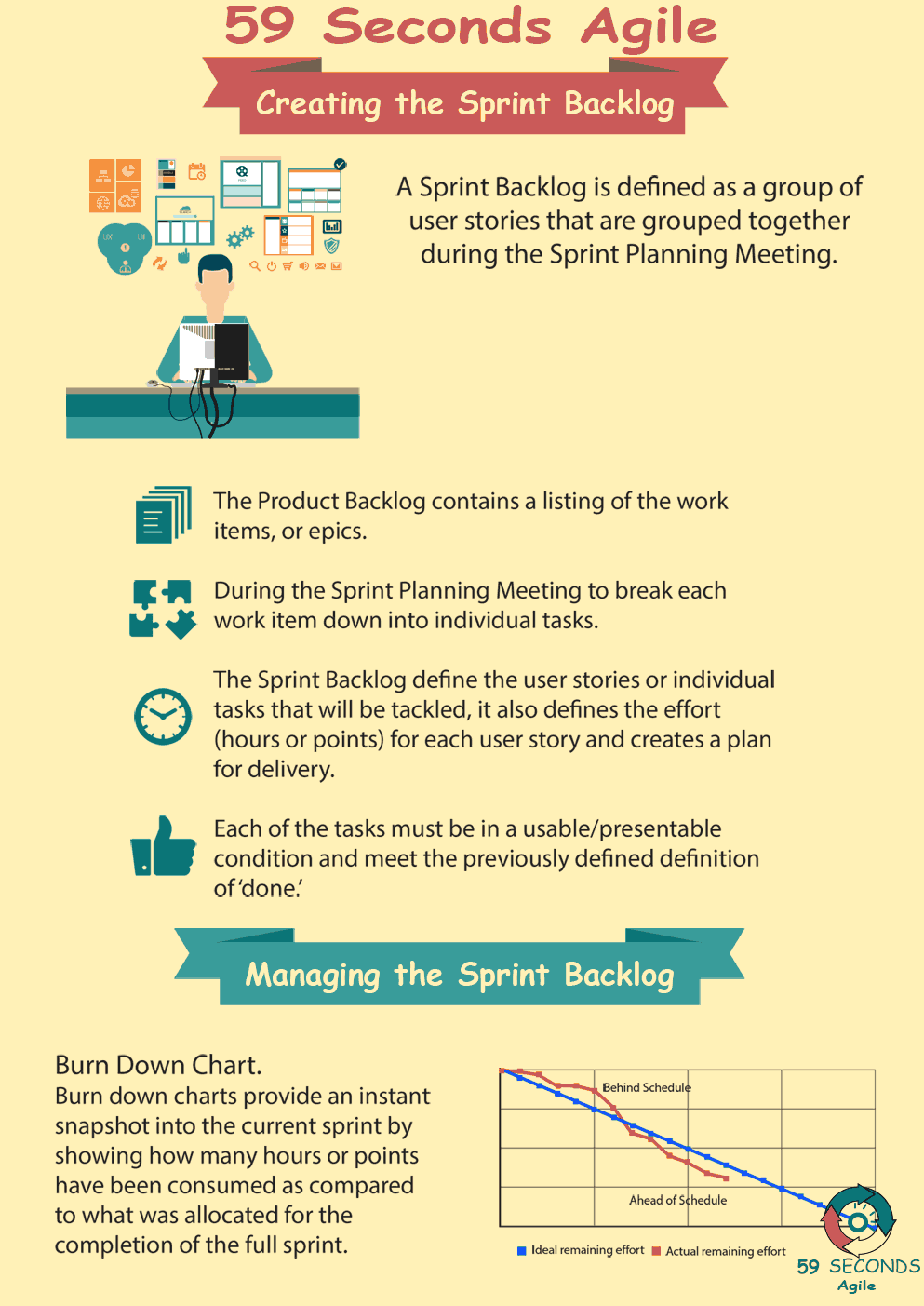Agile Sprint Backlog
A 59 Seconds Agile Training Video
Continue to Next Section
The Agile Sprint Backlog
A 59 Seconds Agile Article
This article provides an ‘Introduction in to ‘The Agile Sprint Backlog’ and looks to discuss the metrics used for measuring project progress.
Sprint Backlog Conclusion
In summary, the sprint backlog is a list of tasks identified by the Scrum team to be completed during the sprint. During the sprint planning meeting, the team selects product backlog items, in the form of user stories, and identifies the tasks necessary to complete each user story. Teams also estimate how many hours each task will take the team to complete.
It’s critical that the team selects the items and size of the sprint backlog, because they are the people committing to completing the tasks, they must be the people to choose what they are committing to during the sprint.
As the agile principle stipulates, “Agile processes promote sustainable development.
The sponsors, developers and users should be able to maintain a constant pace indefinitely.”
Using the different planning and monitoring tools, such as the sprint burndown chart, will enable the team to deliver a product that is valuable to the customer. The Team determines how best to work through the Sprint Backlog. However, when possible, they should work on the highest value items first.
Once the Team forecasts the number of stories they feel they can accomplish in the Sprint Backlog, there should be no additions or changes until the Sprint ends.
Continue Reading —> Next
The Agile Sprint Backlog
A 59 Seconds Agile Video Animation
Continue Reading —> Next
User Stories Applied
A 59 Seconds Agile Book Review
User Stories Applied by Mike Cohn is one of our favourite books on Agile User Stories. The book starts with an overview into user stories, and details what a user story is and the different aspects of them. He then discusses how to go about writing a user story, and provides details of the INVEST criteria that can be used to determine if the story is meeting all of its objectives. Next Mike gives an in depth discussion of who user stories are written for and where to begin when gathering the details for them. The book then discusses acceptance testing user stories, including how to go about specifying these criteria and the responsibilities of the development team and customers during this process.
Continue Reading —> Next
Creating the Sprint Backlog
A 59 Seconds Agile Infographic

Continue Reading —> Next
Agile Scrum Master Training Course
Our Favourite Agile Books
We found these books great for finding out more information on Agile Scrum:
Continue Reading —> Next


